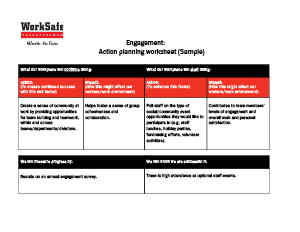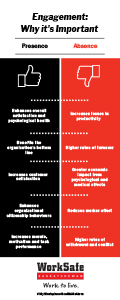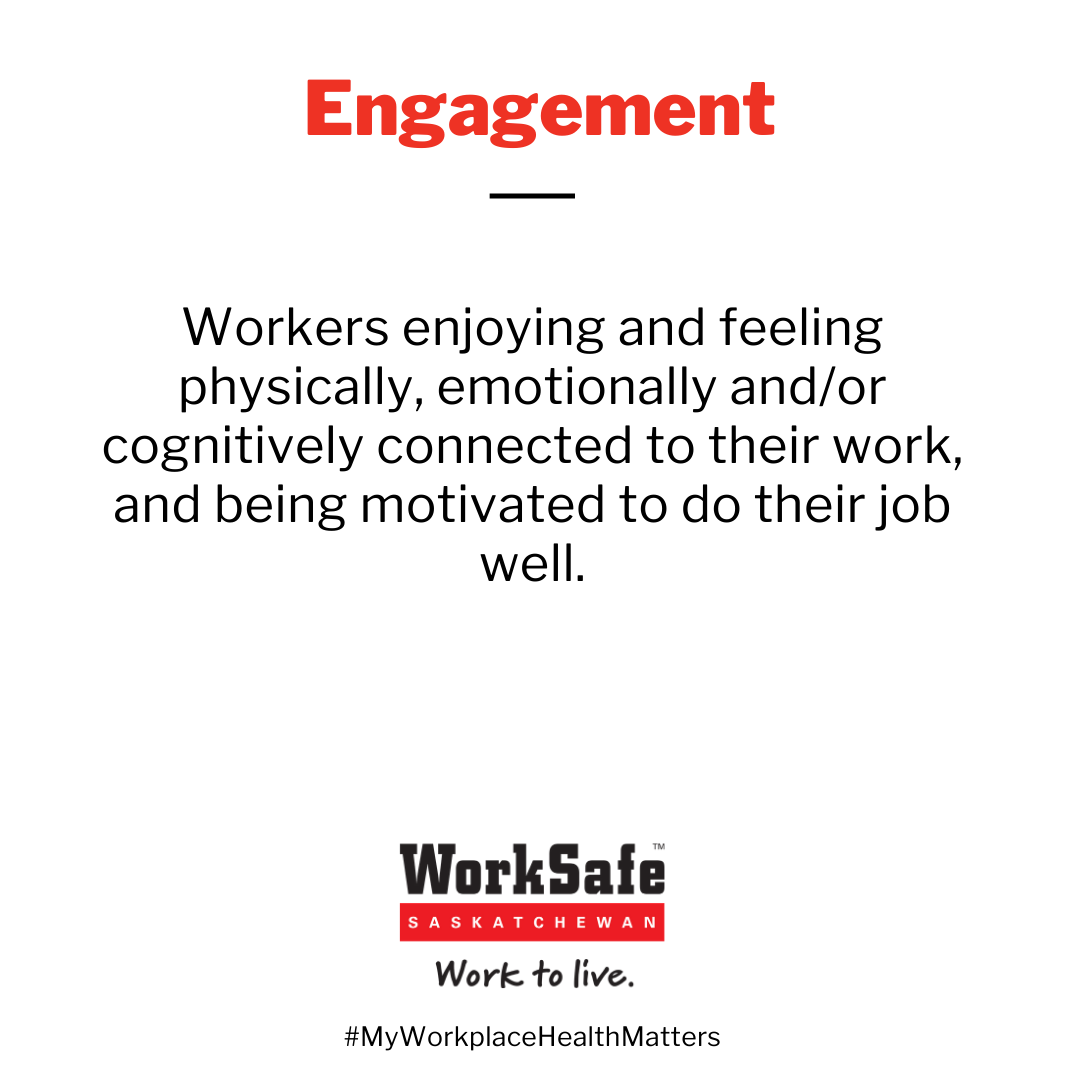 Engagement
Engagement
Involves workers enjoying and feeling physically, emotionally and/or cognitively connected to their work, and being motivated to do their job well.
“Employees engage with employers and brands when they’re treated as humans worthy of respect.” – Meghan Biro
Overview
What is engagement?
Engagement is present in a work environment where workers enjoy and feel connected to their work and where they feel motivated to do their job well. Worker engagement can be physical, emotional and/or cognitive. Physical engagement is based on the amount of exertion a worker puts into his or her job. Physically engaged workers view work as a source of energy. Emotionally engaged workers have a positive job outlook and are passionate about their work. Cognitively engaged employees devote more attention to their work and are absorbed in their job. Whatever the source, engaged workers feel connected to their work because they can relate to, and are committed to, the overall success and mission of their company.
Engagement should be seen as a result of policies, practices and procedures for the protection of worker psychological health and safety. Engagement is similar to, but is not to be mistaken for, job satisfaction, job involvement, organizational commitment, psychological empowerment and personal motivation.
An organization with good engagement would be able to state that:
- Workers enjoy their work.
- Workers are willing to give extra effort at work if needed.
- Workers describe work as an important part of who they are.
- Workers are committed to the success of the organization.
- Workers are proud of the work they do.
FAQs
Action
Next steps: Cultivating employee engagement
Engagement is psychosocial factor 10 from CAN/CSA-Z1003-13/BNQ 9700-803/2013 – Psychological Health and Safety in the Workplace. Retrieved from: https://www.csagroup.org/article/cancsa-z1003-13-bnq-9700-803-2013-r2018/. See also Guarding Minds at Work (Samra et al.): Retrieved from https://www.guardingmindsatwork.ca/resources.




